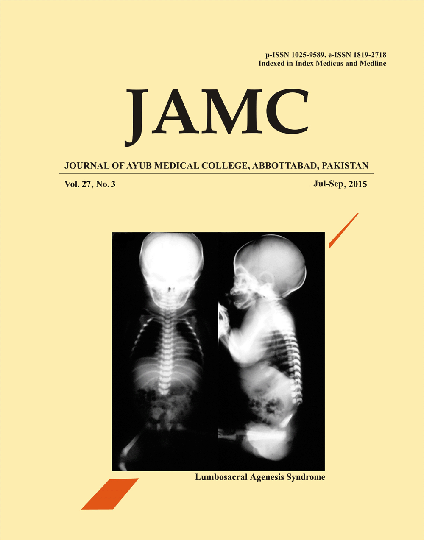BEDSIDE ULTRASOUND IN CARDIAC EMERGENCY
Abstract
Dear Sir,
The cardiovascular disorders are the leading cause of death all over the world. Of them, cardiogenic shock is the major cause in Pakistan.1 The increasing number of cardiac emergencies requires prompt diagnosis and treatment. The use of ultrasound is clinically implicated over the last 50 years as a first-line test for the cardiac evaluation of symptomatic patients.2 The clinical utility of ultrasound is widespread in the valuable assessment and timely diagnosis of cardiac ill patients. It is easy to handle and has a good imaging quality to be used in emergency settings and it has relatively low cost. It is safe and can be repeated at any time to detect changes in patient hemodynamics.3
A cardiac ultrasound can be used to evaluate the motion of heart, its structure, to detect any valve dysfunction, evaluate heart murmurs, determine any fluid collection around the heart and to visualize the blood flow to heart for detection of any atherosclerosis, so the ultrasound can be used in different ways to detect the anomalies of the heart. Future research remains to be carried out to determine the efficacy of bedside ultrasonography.4
By using a pocket-sized ultrasound in cardiac emergencies, correct diagnosis can be achieved in almost 1 of 5 patients which can result proper treatment strategy.5 Even rapid cardiac sonography can be successfully integrated in the ACLS response.6 Equally important to the technical performance of this modality is the training of the clinicians who use it. Even before images are acquired, physicians who perform it need to be knowledgeable about the appropriate use of this technique.7
I request the health authorities to conduct sessions and training programs for the medical professionals regarding bedside cardiac ultrasound and make it a criterion which can improve our emergency situations and to provide accurate treatment. All efforts have to be made to implement it successfully in our hospital settings to ensure the standard care given to the patients.Downloads
Published
How to Cite
Issue
Section
License
Journal of Ayub Medical College, Abbottabad is an OPEN ACCESS JOURNAL which means that all content is FREELY available without charge to all users whether registered with the journal or not. The work published by J Ayub Med Coll Abbottabad is licensed and distributed under the creative commons License CC BY ND Attribution-NoDerivs. Material printed in this journal is OPEN to access, and are FREE for use in academic and research work with proper citation. J Ayub Med Coll Abbottabad accepts only original material for publication with the understanding that except for abstracts, no part of the data has been published or will be submitted for publication elsewhere before appearing in J Ayub Med Coll Abbottabad. The Editorial Board of J Ayub Med Coll Abbottabad makes every effort to ensure the accuracy and authenticity of material printed in J Ayub Med Coll Abbottabad. However, conclusions and statements expressed are views of the authors and do not reflect the opinion/policy of J Ayub Med Coll Abbottabad or the Editorial Board.
USERS are allowed to read, download, copy, distribute, print, search, or link to the full texts of the articles, or use them for any other lawful purpose, without asking prior permission from the publisher or the author. This is in accordance with the BOAI definition of open access.
AUTHORS retain the rights of free downloading/unlimited e-print of full text and sharing/disseminating the article without any restriction, by any means including twitter, scholarly collaboration networks such as ResearchGate, Academia.eu, and social media sites such as Twitter, LinkedIn, Google Scholar and any other professional or academic networking site.










